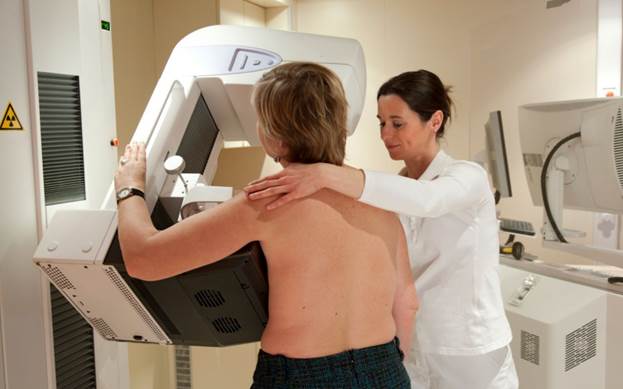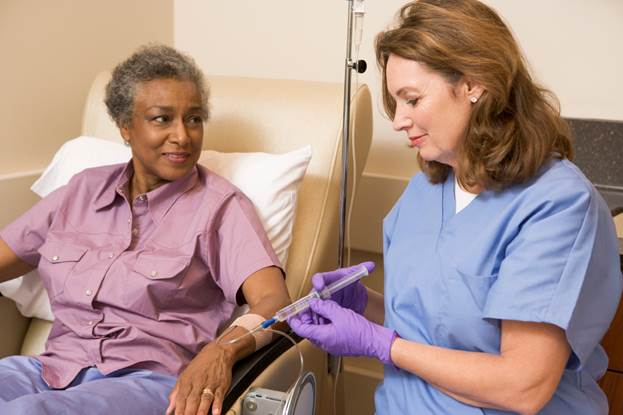Cancer screening is oversold. Know the
tests to get – and those to skip
Early detection saves lives. That’s the
assumption that drives aggressive cancer-screening campaigns. It’s what
persuades women to host “mammogram parties” where they gather friends for wine,
cheese, massages, prizes, and breast-cancer screenings. It’s what persuades men
to offer up blood for prostate-cancer tests at hockey games or onboard a huge
red bus parked at sporting – goods stores.

Cancer screening is oversold.
But the big red bus and other
direct-to-consumer screening efforts raise big red flags, our experts say. For
one, those campaigns may not be entirely altruistic. In exchange for snacks and
door prizes, the radiology clinics and hospitals often behind the campaigns
benefit from a new crop of paying customers. Zero, the nonprofit group that
offers free prostate-cancer screening at events around the country, counts
among its partner’s doctors and businesses that can benefit financially from
cancer testing and treatment.
But most important, the message that you
have nothing to lose and everything to gain from being screened for cancer –
that is, to be tested for a cancer before you have any symptoms of it- simply
isn’t true.
“The medical and public-health community
has systematically exaggerated the benefits of screening for years and
downplayed the harms,” says H. Gilbert Welch, M.D., a professor of medicine at
the Dartmouth Institute for Health Policy and Clinical Practice in Lebanon,
N.H.
In a recent article in the New England
Journal of Medicine, Welch found that the number of early breast-cancer cases
had shot up since mammography became common three decades ago but that advanced
cancer cases hadn’t declined much. Welch estimated that in 2008 more than
70,000 women 40 and older were found to have small, nonaggressive cancers that
were treated even though they probably wouldn’t be life-threatening.
Such treatment, including radiation or the
surgical removal of all or part of the breast, can cause serious complications,
such as bone loss and menopause like symptoms. And even when it doesn’t lead to
treatment, screening can lead to unnecessary biopsies, which can cause anxiety
and pose a small risk of infection.

The
number of early breast-cancer cases had shot up since mammography became common
three decades ago but that advanced cancer cases hadn’t declined much.
“When it comes to screening, most people
see only the positives,” says Otis Braw-ley, M.D., chief medical officer of the
American Cancer Society. “They don’t just underestimate the negatives, they
don’t’ even know they exist.”
Of course, for some tests, the benefits
clearly do outweigh the risks. “My family’s experience illustrates how
screening can make all the difference,” says Tracy Doss, an educational
assistant in Austin, Texas. Doss lost her father and a grandfather to colon
cancer but probably won’t develop the disease herself, because doctors found
and removed precancerous growths using colonoscopy and she will continue to be
screened.
But for many other cancer tests, the
benefits and risks are more evenly balanced, with the final decision depending
on a thorough conversation between patient and doctor. And with some tests,
routine screening poses more risks than benefits, and needless expense.
“The marketing message that early detection
saves lives is simple and compelling,” says Laura Nikolaides, M.S., director of
research and quality-care programs at the National Breast Cancer Coalition.
“But the reality as we understand it today is much more nuanced. The problem is
how to get that more complex message to the public when it’s so different than
what they’ve come to believe.”
For this investigation, we pored over reams
of research, consulted medical experts, surveyed more than 10,000 readers, and
talked with patients. We found that too many people are getting tests they
don’t need or understand, and too few are getting those that could save their
lives. Many patients, and even some doctors, can be confused by cancer screening.
That’s because:
Cancer is different than once thought.
Doctors used to view cancer as uniformly
deadly, but researchers now understand that cancer cells can appear and then
disappear on their own, or never spread. Most screening tests don’t discriminate
between the harmless and deadly kinds.

Most
screening tests don’t discriminate between the harmless and deadly kinds.
Statistics can mislead.
“Doctors and patients don’t understand
numbers,” says Jeffrey Starke, M.D., director of infection control at Texas
Children’s Hospital in Houston. “You can take the same set of data and either
scare people or reassure them depending on how you represent the numbers.”
Starke knows firsthand about the potential harm of screening. He almost died
of an infection following what he now views as an unwarranted biopsy triggered
by prostate-cancer screening.
Some tests just aren’t very good
For example, screening for pancreatic and
ovarian cancers doesn’t save lives in part because tests rarely find them at a
curable stage.
Bottom
line.
Weighing the risks and benefits of cancer
screening is best done in the context of a doctor-patient relationship, not at
a party or a sporting event. “It’s wrong to promote these tests for everybody,”
says R. Chou, M.D., associate professor of medicine at the Oregon Health and
Science University in Portland. “Truth is, sometimes the choice to screen or
not is a close call.”
Cancer 2.0
Cancer screening and treatment are at a
crossroads. As tests become more sensitive, they find increasingly tinnier
cancers, and more of them. But many of those abnormal cells don’t’ fit our
conventional notion of how cancer behaves.
“The popular understanding of cancer-that
if you have even a single cancer cell, it will multiply to the point that it
eventually kills you – is fundamentally wrong,” says V. Moyer, M.D., a
professor of pediatrics at the Baylor College of Medicine in Houston and
chairwoman of the U.S. Preventive Services Task Force, an independent panel
that provides evidence based guidelines on health care. “What we’ve learned in
the last decade or so is that cancer doesn’t always act like that. Lots and
lots of cells in our body turn cancerous and then disappear; others look like
cancer but do absolutely nothing.”

People
are compelled toward screening and prevention as a means to secure their health
For example, in younger women, cancer-like
changes in the cervix are more likely to clear up on their own. That’s one
reason the task force no longer recommends Pap smears for women younger than
21.
In fact, no screening test is right for
everyone. To reduce the number of false alarms, guidelines target those at
increased risk for a disease. So, for example, screening CT scans for lung
cancer have only been found to help people at the highest risk, those ages 55
to 74 who were heavy smokers for many years. Screening those at lower risk
wouldn’t reduce mortality rates, research suggests, but would expose people to
radiation, as well as follow up tests and procedures to chase down false
alarms.
Focusing on high-risk populations alone,
however, doesn’t solve the problem of tests that are pretty good at finding
suspicious changes but don’t tell much about whether they can actually hurt
you, such as mammograms for breast cancer and prostate-specific-antigen (PSA)
blood tests for prostate cancer. And that leaves many people in a quandary,
trying to decide whether the risk of treatment is worth the slight chance of
finding a deadly cancer.
“People are compelled toward screening and
prevention as a means to secure their health,: says K. Lovett, M.D., of the
Center for Patient Safety at the University of California at San Diego. “It’s
frustrating that we don’t have the data to address these uncertainties.”
Some people are even taking matters in
their own hands, seeking tests through companies that advertise directly to
consumers. They include blood tests for prostate cancer, stool tests for colon
cancer, and even self-referrals for breast-cancer screening, including
thermo-graphic (heat) imaging, which the American Cancer Society says should
never be used in place of mammography.
By passing your doctor is a mistake, Lovett
says, because she has found that almost no screening test marketed directly to
consumers is clearly supported by evidence-based guidelines. “The system is
breaking under consumer demand for screening and preventive care,” she adds.
“Truly, there is dissatisfaction among both patients and physicians.”